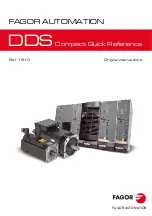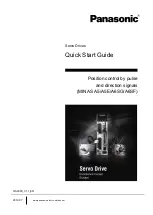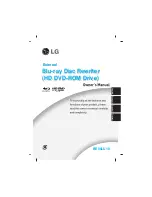
GD310-UL series VFD
Communication protocol
-193-
In one character frame, the digital bit takes effect. The start bit, check bit and end bit is used to send
the digital bit right to the other device. The digital bit, even/odd checkout and end bit should be set as
the same in real application.
The Modbus minimum idle time between frames should be no less than 3.5 bytes. The network
device is detecting, even during the interval time, the network bus. When the first field (the address
field) is received, the corresponding device decodes next transmitting character. When the interval
time is at least 3.5 byte, the message ends.
The whole message frame in RTU mode is a continuous transmitting flow. If there is an interval time
(more than 1.5 bytes) before the completion of the frame, the receiving device will renew the
uncompleted message and suppose the next byte as the address field of the new message. As such,
if the new message follows the previous one within the interval time of 3.5 bytes, the receiving device
will deal with it as the same with the previous message. If these two phenomena all happen during the
transmission, the CRC will generate a fault message to respond to the sending devices.
The standard structure of RTU frame:
START
T1-T2-T3-T4 (transmission time of 3.5 bytes)
ADDR
Communication address: 0
–247 (decimal system) (0 is the broadcast address)
CMD
03H: read slave parameters
06H: write slave parameters
DATA (N-1)
…
DATA (0)
The data of 2*N bytes are the main content of the communication as well as the
core of data exchanging
CRC CHK low bit
Detection value: CRC (16BIT)
CRC CHK high bit
END
T1-T2-T3-T4 (transmission time of 3.5 bytes)
10.3.2.2 RTU communication frame error checkout
Various factors (such as electromagnetic interference) may cause error in the data transmission. For
example, if the sending message is a logic
“1”, A-B potential difference on RS485 should be 6V, but in
reality, it may be -6V because of electromagnetic interference, and then the other devices take the
sent message as logic
“
0
”
. If there is no error checkout, the receiving devices will not find the
message is wrong and they may give incorrect response which cause serious result. So the checkout
is essential to the message.
The theme of checkout is that: the sender calculate the sending data according to a fixed formula, and
then send the result with the message. When the receiver gets this message, they will calculate
anther result according to the same method and compare it with the sending one. If two results are
the same, the message is correct. If not, the message is incorrect.
The error checkout of the frame can be divided into two parts: the bit checkout of the byte and the
whole data checkout of the frame (CRC check).
Содержание GD310-011P-4-UL
Страница 1: ......
Страница 269: ...6 6 0 0 1 0 0 3 9 3 ...
















































